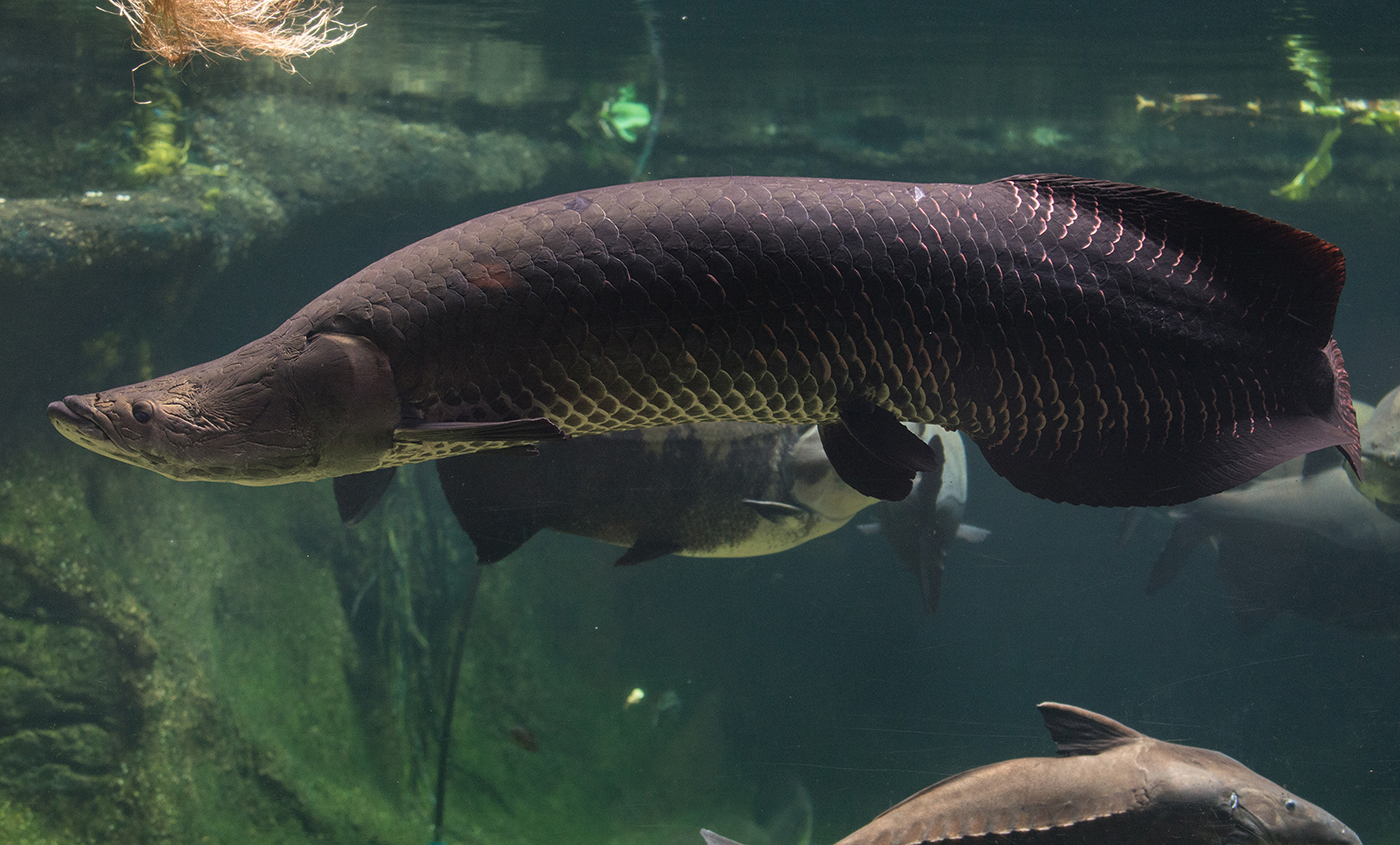
Unveiling the Arapaima: Majestic Giants of the Amazon
In the heart of the Amazon rainforest, a true aquatic giant prowls the murky depths of its rivers and lakes: the Arapaima. With its imposing size, ancient lineage, and unique adaptations, this majestic fish commands attention and respect as one of the most iconic inhabitants of the world’s largest tropical wilderness.
Introduction to the Arapaima: The Arapaima, scientifically known as Arapaima gigas, is a species of freshwater fish native to the Amazon Basin in South America. Also referred to as the pirarucu, this colossal creature is renowned for its massive size, with individuals reaching lengths of up to 15 feet (4.5 meters) and weights exceeding 440 pounds (200 kilograms). As one of the largest freshwater fish species in the world, the Arapaima holds a place of reverence in Amazonian folklore and indigenous cultures.
Physical Characteristics: The Arapaima possesses a distinctive appearance characterized by its elongated, torpedo-shaped body, large scales, and powerful tail fin. Its coloration varies from shades of gray and brown to vibrant hues of green and red, providing effective camouflage amidst the dense vegetation of its aquatic habitat. Remarkably, the Arapaima is equipped with a specialized respiratory system that allows it to breathe air at the water’s surface, enabling it to survive in oxygen-deprived environments.
Habitat and Behavior: Arapaimas inhabit the slow-moving rivers, flooded forests, and oxbow lakes of the Amazon Basin, where they are well adapted to the region’s dynamic aquatic ecosystems. They are primarily ambush predators, lying in wait among submerged vegetation or near the surface to ambush prey such as fish, crustaceans, and even small mammals and birds. Despite their formidable size, Arapaimas are surprisingly agile swimmers, capable of bursts of speed when pursuing prey or evading predators.
Cultural Significance: In indigenous Amazonian cultures, the Arapaima holds immense cultural and spiritual significance, symbolizing strength, abundance, and resilience. For centuries, indigenous communities have relied on the Arapaima as a vital source of food and sustenance, employing traditional fishing techniques to harvest these prized fish sustainably. Additionally, the Arapaima plays a central role in local folklore and mythology, featuring prominently in stories and rituals passed down through generations.
Conservation Challenges: Despite their cultural importance and ecological significance, Arapaima populations face numerous conservation challenges, including habitat destruction, overfishing, and illegal poaching. Deforestation, dam construction, and unsustainable fishing practices threaten the delicate balance of Amazonian ecosystems, placing additional pressure on Arapaima populations already vulnerable to exploitation.

Conservation Efforts: Efforts to conserve Arapaima populations and their habitats are underway, led by local communities, conservation organizations, and government agencies. Initiatives such as the establishment of protected areas, implementation of sustainable fishing practices, and community-based management programs aim to safeguard Arapaima populations while promoting the long-term sustainability of Amazonian fisheries and ecosystems.





